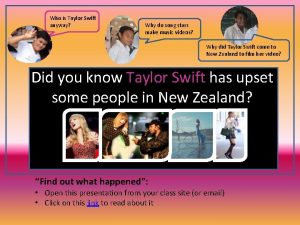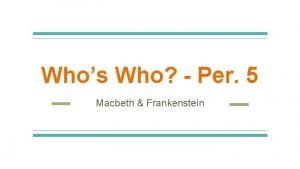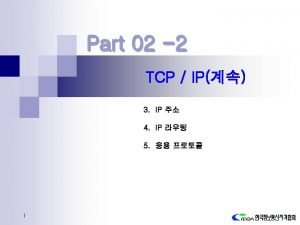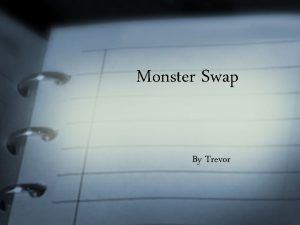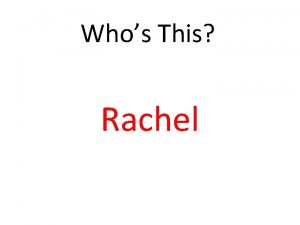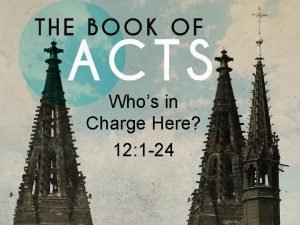MONSTER MASK Whos the monster here WHO WAS










- Slides: 10

MONSTER MASK Who’s the monster here?

WHO WAS FRANKENSTEIN? What do you know about Victor Frankenstein and his creature? Victor Frankenstein and the “monster” he created first appeared 200 years ago in Mary Shelley’s novel Frankenstein. Since then, these characters have appeared in plays, movies, TV shows, comic books, and many other places. You may recognize Frankenstein’s creature as a Halloween costume, a classic Hollywood monster, or the complex character in Shelley’s story. Frankenstein’s monster and his bride are popular Halloween costumes. Children may recognize and enjoy the characters without knowing their history.

In Mary Shelley’s original story, Victor Frankenstein was a science student with a secret project. He built a person out of dead body parts and brought it to life. Victor thought his creature looked like a monster, and he was scared of it. The creature ran away and learned to survive on its own. It did some good things and some very bad things. Some people wonder who was the real monster —Victor or his creature. In this activity, you will make a mask that lets you pretend to be someone or something else! Victor Frankenstein used surgery, chemistry, electricity, and other methods to build his creature and bring it to life. This illustration is from an early edition of Mary Shelley’s 1818 novel.

MAKE A MASK 1. Design your mask. Decide what you want your mask to look like. You can add extra parts to the basic shape! Use the markers to color it. What can you add to give the mask character? How will we know whether your mask is friendly or scary? 2. Cut it out. Cut out the mask, then make eye holes so you can see.

3. Light it up. Now add an LED bulb! Punch a hole where you’d like to put the bulb. Thread the legs of the LED through the hole, so the bulb is on the outside of the mask. Turn the mask face down, so you’re looking at the back. Place a loop of tape onto the paper, then bend the short leg of the LED onto the tape. Place the battery onto the tape loop, negative side down. Bend the long leg of the LED onto the top of the battery. The bulb should light up. Tape the top leg and battery down. Tip: If the bulb doesn’t light, check that the battery is positive side up, and that the long leg of the LED is touching the + side.

4. Try it on! Tape a craft stick to the back of the mask. It will be easiest to hold if you put the stick on the bottom. Now hold the mask up to your face, and look in the mirror! How do you look? Did you design your mask to give it a certain personality or character? What makes a face seem funny, scary, or just plain weird?

MONSTER OR MISTREATED? Mary Shelley’s novel Frankenstein tells the story of a man who builds a creature and brings it to life—but doesn’t take responsibility for it. Victor Frankenstein thinks his creature is deformed and evil. Other people are cruel to the creature because they’re afraid of him. The creature is even scared of himself when he sees his image reflected in a pool of water! Do you think it is fair that everyone thinks the creature is a monster because of the way he looks? Why do we think beautiful things are good and ugly things are evil? Actor Boris Karloff tried to show the humanity of Frankenstein’s creature. Karloff played the character in many Hollywood movies.

PEOPLE ARE CREATIVE We’re always learning more about the world and inventing new things. People have used selective breeding to improve plants and animals for thousands of years. Recently, we have begun using genetic engineering and synthetic biology to create modified and entirely new organisms. Sometimes people bring up the story of Frankenstein’s creature when they talk about genetic engineering. The story is often used to suggest that the products of this work are unnatural and potentially harmful. Glo. Fish are genetically modified organisms (GMOs) that are sold as pets. A gene from a jellyfish gives these zebrafish their fluorescent colors.

RESPONSIBLE INNOVATION Frankenstein suggests that as we study science and make new technologies, it’s important to think ahead. For example, scientists have figured out how to use gene drives to encourage engineered traits to spread quickly through a population. Some researchers think gene drives could be used to reduce the number of mosquitos, which would help control the diseases these insects carry. What might happen if genetically engineered mosquitos were released in the wild? Could a change in mosquito population affect other animals? Researchers in the field of synthetic biology are editing the genes of mosquitoes and other animals. They are also engineering yeast to produce entirely different things, such as biofuels, ingredients for cosmetics, and synthetic vanilla flavoring.

Mary Shelley’s novel Frankenstein is a 200 -year-old science fiction story that explores themes of human creativity and scientific ethics. The Frankenstein 200 project allows people across the United to States to exercise their creativity and consider responsible innovation in fields such as artificial intelligence and genetic engineering. Frankenstein 200 is a national project led by Arizona State University. In addition to hands-on activities, Frankenstein 200 includes an alternate reality game that immerses players in a modern-day Laboratory for Innovation and Fantastic Explorations (L. I. F. E. ). This fictional story imagines what might happen if a character named Dr. Tori Frankenstein picked up where her ancestor Victor Frankenstein left off. Visit Frankenstein 200. org to play the game! Copyright 2017, Arizona State University. Published under a Creative Commons Attribution. Noncommercial-Share. Alike license: http: //creativecommons. org/licenses/by-nc-sa/3. 0/us/ Distributed in collaboration with the National Informal STEM Education Network: nisenet. org This project was supported by the National Science Foundation under Grant Number 1516684. Any opinions, findings, conclusions, or recommendations expressed in this program are those of the authors and do not necessarily reflect the views of the Foundation.




